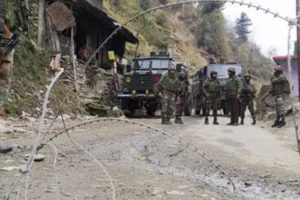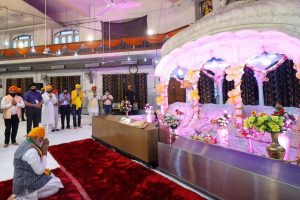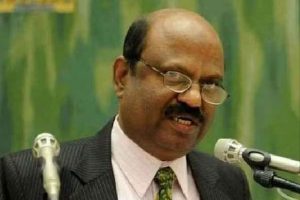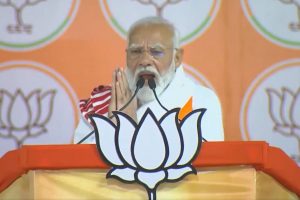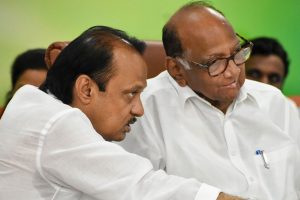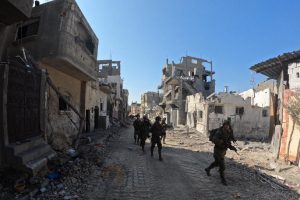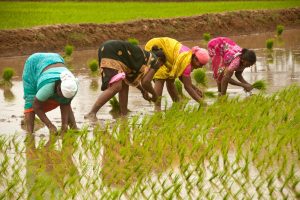I often feel a visceral pain just thinking about raising our children without having them read the treasure of Rabindranath Tagore and Kazi Nazrul Islam, and without feeling the immense joy of listening to “Thakurmar Jhuli,” a collection of fairy tales by Dakshinaranjan Mitra Majumdar, as well as works by Palli Kabi Jasimuddin, Hasan Raja or Lalon. Ami ki bhulite pari, the sacrifice and bloodbath of my brothers and sisters? How can I forget that, as a nation, Bangladesh was born out of a long historical struggle to establish the due respect of our mother language, cultural distinction, and selfdetermination?
The gradual loss of language, culture, and identity as a Bengali-American feels like a loss of self and surpasses the material benefit of immigration to the US, as millions of Bangla-speaking people here experience. I teach my child, born and raised in the US, “You are the one who will keep our legacy forward. Remember, our language and culture will live with you.” I have no idea how this message will be translated into her life journey.
More than 2.5 million Banglaspeaking people comprise only a tiny fraction of the huge mosaic of the US population, which is around 331.45 million, according to the 2020 census. The ever-growing population of Bengali immigrants in the US and around the world has emerged and evolved as a new cultural community, without living in a nation-state and still sharing a linguistic and cultural identity drifting from their countries of origin — namely Bangladesh and India.
Bangla is the seventh most spoken language in the world in terms of population, with nearly 265 million speakers in total, among whom around 228 million speak Bangla as their first language. The global cosmopolitans such as New York, London, Washington DC, Los Angeles, Toronto, Paris, Sydney, Berlin, and many other cities have been embracing Bangla as a second language as the Bangla-speaking diaspora communities have been growing and evolving for more than half a century now. This community, living in a new form of Bengali culture as a minority adapting to the new mainstream cultures hybridising their language and identity, faces the challenge to pass their legacy and language down to the new generation.
Teaching children Bangla as a second language has become a great challenge for the families living beyond the borders of Bangladesh and West Bengal of India. The Bengalis beyond the borders bring new elements into the global plural cosmo-culture, though; they are also evolving and transmuting themselves as the minority Bengalis without having the boundary of any nation-state.
In the US, the number of Bangladeshi immigrants began to grow in the 1970s, reaching from 57,000 to 188,000 during 2000-2015. According to the 2006 census, the number of Indian Bengalis is 47,600. Both of the Bangla-speaking communities have been struggling to keep the language alive in their family and community lives as Bengali-Americans. These families have begun to establish Bangla language schools to keep the language alive and are trying to keep their children grounded in their roots, while raising them as global Bengalis. This trend is now on the rise in all the cosmo-cities around the world, thriving especially since 2020 on the online platforms during Covid-19.
Some of the Bangla schools have been running for three or four decades now, and new schools continue to emerge. These Bangla schools have begun to consolidate their activities through collaboration, using the concept of Milan Mela, for example, supported by the Friends of Bangla School in the South Asia Center of the University of Pennsylvania.
Last year, Milan Mela was organised as a coming together of 16 Bangla schools from around the US, with both West Bengal and Bangladeshi traditions to celebrate the Bangla language and Bengali identity, and to build a greater alliance for advancing the Bangla language, literature, and culture within the pluralistic society of America. This assembly is seeking to form a North American Bangla Association to negotiate identity and attain a recognition of Bangla as a second language in the institutional form and American state policy.
Keeping the education of Bangla at the heart of claiming the Bengali identity and building a community, this collective aspires to knit together the Bengali diaspora to secure a future for Bangla beyond Bangladesh and India.
Besides the interest of Bengali Americans, Bangla has also been taught and researched in some major US universities as a foreign language, usually in the Asian and South Asian centres in the University of Wisconsin, University of Chicago, Yale University, University of Texas, Austin, Pennsylvania State University, University of California, Berkeley and University of Washington, for example, where curriculums for Bangla have been developed and offered each year.
The community Bangla schools have begun to receive recognition as certified language schools that enable the students to get the freshman year credit, exempting the requirement for taking a foreign language course. As teaching elementary Bangla is not similar to teaching Bangla as a native tongue in Bangladesh or West Bengal, these schools are often struggling with finding the contextual pedagogical approach, which must be methodologically different from the setting of the country of origin.
Engaging with the curriculums already developed and available in the US universities and using those in the contextual situations might be effective to achieve the language skill in a pleasurable manner. Currently, there are two major pedagogical approaches used in these community schools – namely, linguistic approach and cultural immersion/community learning approach – which have been further benefited with the opening of the floodgate of online teaching and learning platforms during the pandemic.
The practical benefits in professional training and career advancement in some areas can be explored with Bangla language skills – as a medical and legal translator, research and diplomatic interpreter, and in the job posting in the missions and consulates in Bangladesh and India – not to mention the issue of bonding with the extended family members back home. Celebrating the pluralistic values as new immigrants in the US, I believe that language and communication play a vital role in the heart of the human experience that must be nurtured and developed with the vehicle of indigenous, immigrant, and world languages, as Bangla is in America.
To educate our children to be bilingual or multilingual and encourage them to be linguistically and culturally prepared to be able to navigate an increasingly globalised world with confidence, courage and mutual admiration is our solemn duty. I believe we are bringing Bangla to the global stage and making it a global language through instilling the beauty of the language and the literature into children’s hearts and empowering ourselves by being the Bilingual Bengalis without a border.
More centres of Bangla language and culture may emerge in the future – who knows? Thus, we are possibly paving the way for many more Jhumpa Lahiris, Arundhati Roys, Zia Haider Rahmans, Monica Alis and Tahmima Anams to emerge out of this trajectory.
(The Daily Star/ANN)


